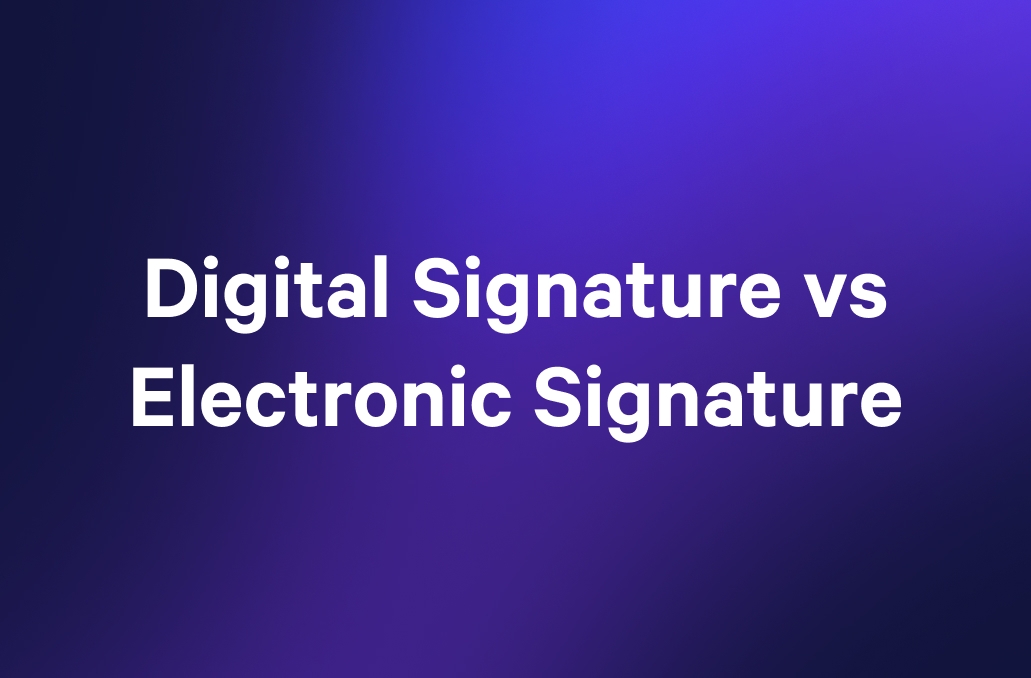Contracts are the backbone of legal and business agreements, serving as the trusty glue that binds commitments between parties. But what happens when circumstances change (and they most often do!), leading to a contract that needs tweaking?
Enter amendments and addendums - the unsung heroes of contract modifications.
Like forks in the road, these two options lead to different outcomes, and understanding their distinctions can save you from a legal headache down the line.
Whether you're a business owner, freelancer, or sales professional, knowing when to use an amendment versus an addendum can help ensure your agreements remain enforceable and fair.
Let’s dive in.
Key Takeaways
- An amendment alters specific terms within the original contract, such as payment deadlines or obligations, while an addendum adds new provisions without changing the existing agreement.
- Amendments directly change the contract’s text, while addendums are separate documents attached to the original. Both require signatures, but amendments affect existing terms, whereas addendums introduce new clauses.
- Both amendments and addendums should reference the original contract, specify changes or additions, include signatures from all parties, and state an effective date.
- To prevent disputes, it’s important to have legal experts review contract modifications, clearly define whether changes override prior agreements, and keep signed records with the original contract.
Amendment versus addendum
They sound the same but they’re pretty different. Here’s how to tell an amendment and an addendum apart, plus we’ve included a couple of examples of each. (By the end of this you’ll be able to write a book).
Read next: How to write a retainer agreement
What is an amendment?
To amend: change, modify, adapt, revise.
An amendment is a formal alteration to the original contract. It changes, revises, or removes specific terms within the existing document. Think of it like editing a recipe—swapping sugar for honey or adjusting the baking time? This is useful when parties agree that some terms need to be updated due to new circumstances, such as changes in payment terms, deadlines, or obligations.
Example 1
Real Estate: A landlord and tenant agree to extend the lease for an additional six months. Instead of drafting a new lease, an amendment is created to update the lease expiration date and rental amount. See how to write a real estate contract here
Example 2
Employment Contracts: An employee is promoted, and their salary is increased. Instead of drafting a new employment contract, an amendment is added to reflect the new compensation and responsibilities. (Go employee!)
Example 3
Service Contracts: A software company provides customer support services under a contract. Due to company expansion, the client requests an increased level of support. An amendment is drafted to adjust service levels and fees accordingly.
What is an addendum?
Fun fact: The verb form of the word "addendum" is "append” meaning to add something to a document.
So, an addendum, on the other hand, is a separate document that adds new information or terms to an existing contract without altering the original text. If an amendment is like editing a recipe, an addendum is like adding a side dish to complement the meal.
This is often used when additional clauses, provisions, or new agreements are needed, such as including an extra service to an existing contract without changing the initial agreement’s structure.
Example 1
Business agreements: A supplier and retailer sign a contract for monthly deliveries. Later, the retailer decides to add a new product line. Instead of rewriting the contract, an addendum is created to include the additional product details while keeping the rest of the agreement intact.
Example 2
Freelance contracts: A graphic designer agrees to create a company’s logo and website. After completion, the client wants additional marketing materials. An addendum is added to the original contract to cover the new scope of work without modifying the initial terms.
Differences between an amendment and an addendum
Let’s add to what we already know, leaving no room for doubt. Are weather and climate the same thing? Not really. A similar concept is going on here. Have a look at these distinct differences.
- Effect on the original contract: An amendment directly changes the contract’s original terms, modifying or removing existing clauses, while an addendum supplements it without making any alterations to the previously agreed terms.
- Format: Amendments are integrated into the contract, requiring changes to be marked, while addendums are separate documents that attach additional terms. The amendment may replace sections, whereas an addendum only adds to the original text.
- Usage: Amendments are used when modifying existing clauses, such as payment terms, timelines, or obligations. Addendums introduce new terms that weren’t part of the initial agreement, like adding a confidentiality clause or additional services.
- Legal standing: Both are legally binding, but an amendment must be signed by all parties involved to validate changes to the contract. An addendum also requires approval and signatures, but since it doesn’t alter the core contract, it generally affects only the new provisions being added.

What to include in each
To ensure clarity and enforceability, amendments and addendums must include specific elements. Here’s a glimpse:
Amendment essentials
- A reference to the original contract, including its title, date, and involved parties to establish clarity.
- A clear description of the modifications being made, explicitly stating the changes to avoid confusion.
- The section or clause being changed, detailing the old wording and the revised version for transparency.
- Agreement by all parties, often requiring signatures and dates to confirm mutual consent.
- The effective date of the changes, ensuring everyone is aware of when the new terms take effect.
- A statement clarifying that all other contract terms remain unchanged, to prevent disputes over unrelated clauses.
Addendum essentials
- A reference to the original contract, including its title, date, and relevant parties.
- A detailed explanation of the new provisions being added, specifying how they relate to the original agreement.
- A statement confirming that all other contract terms remain unchanged, ensuring that the addendum does not unintentionally override existing clauses.
- Signatures of all involved parties, along with dates to indicate agreement and enforceability.
- A clear effective date for when the new terms should be recognized and implemented.

Who might write an addendum or amendment?
Understanding who drafts amendments and addendums can be just as important as knowing when to use them. Here’s a breakdown of common authors:
- Business owners & executives: They often modify sales contracts with vendors, suppliers, and employees to reflect evolving business needs. For example, a company may need to extend a delivery deadline or change the scope of services.
- Real estate agents & property managers: Lease agreements frequently require amendments (e.g., rent adjustments, renewal terms) or addendums (e.g., pet policies, parking arrangements).
- Legal professionals: Lawyers frequently draft these documents to ensure legal soundness and prevent disputes. Having a lawyer review modifications ensures compliance with applicable laws and protects the interests of both parties.
- Freelancers & contractors: Independent professionals often amend agreements with clients to accommodate scope changes, deadlines, or payment terms. An addendum may be added to introduce new services without altering the original agreement’s foundation.
- Government & corporate entities: Large organizations regularly refine contracts to align with new policies, regulations, or industry standards. Government contracts, in particular, often require amendments to reflect policy changes or funding adjustments.
Three tips to note when writing each
- Legal review: While amendments and addendums might seem straightforward, a legal review can prevent unintended consequences. Even small changes can have significant implications, so consulting a legal expert is always advisable.
- Common mistakes: Many make the mistake of not specifying whether an amendment supersedes prior versions, leading to confusion. Clarity is king in contract law, and poorly worded modifications can lead to disputes or unenforceable terms.
- Keeping records: Always store signed copies of amendments and addendums with the original contract to maintain a complete record. Proper documentation ensures that all parties have access to the latest version of the agreement, reducing the risk of misunderstanding or legal conflicts. (As the old saying goes: leave a paper trail!)
Streamlining contract modifications with Qwilr
Managing amendments and addendums can be tedious, to say the least, but modern solutions like Qwilr simplify the process. Qwilr’s proposal software allows users to seamlessly add agreements directly within snazzy proposals, ensuring all necessary modifications are included in one place. Whether you need to attach an addendum for additional services or amend an existing contract within a sales proposal, Qwilr provides an intuitive way to keep all documents organized and legally sound.
Qwilr eliminates the back-and-forth of multiple documents! You can win over your buyer with a compelling proposal, break down the details of your offer in a clear agreement, and finalize everything with a legally binding e-signature—all in one seamless experience.
Streamlining your contract modification process has never been so easy with this formal agreement feature.

We can all agree: Qwilr’s smart proposals win
So…we know we use an amendment instead of an addendum if the core contract terms need alteration. Whereas, we know we use an addendum instead of an amendment if you’re adding extra terms that were not initially included.
By understanding the differences, knowing what to include, and recognizing who typically drafts these modifications, you can confidently navigate the contractual seas, ensuring smooth sailing in your business and personal agreements.
No disagree-ments here, just better contracts! Sign up for a free trial to check it all out.
About the author

Brendan Connaughton|Head of Growth Marketing
Brendan heads up growth marketing and demand generation at Qwilr, overseeing performance marketing, SEO, and lifecycle initiatives. Brendan has been instrumental in developing go-to-market functions for a number of high-growth startups and challenger brands.


